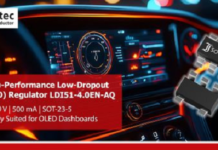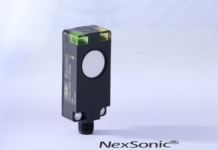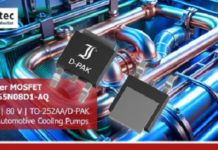
Open the hood on a modern build and you’ll see fewer purely mechanical “set-and-forget” parts and more components that sense, decide, and adapt. The hot trend isn’t just more power or louder pipes; it’s hardware that listens to the car and the road in real time, then changes its behavior on the fly. That shift is being driven by two forces working together: dense networks of sensors feeding clean data, and smart materials that respond predictably to tiny electrical signals. Put them together and you get suspensions that tighten mid-corner, exhausts that change voice with a button press, glass that tints on command, and coatings that quietly heal small scratches.
Exhausts That Change Character on Demand
Exhausts used to be a binary choice: live with drone or live without drama. Variable-valve systems have changed that. An electric or vacuum actuator swings a flap to route gases through a quiet path for the commute, then opens the free-flow circuit when the road clears. Done well, it integrates with drive modes and engine load so your 6 a.m. cold start doesn’t wake the block, but your canyon run still sings. If you’re shopping in Corvette land, GM sells a factory-integrated upgrade with dual-mode valves and carbon-fiber tips that talks to the car like it was there from day one—check out this corvette exhaust for a taste of how cleanly an active system can be packaged.
From Static Parts to Sensing Systems
A decade ago, most upgrades were built around a single operating point: a fixed spring rate, a single exhaust note, a tint that was either too dark at night or too light at noon. Today, accelerometers, wheel-speed sensors, pressure transducers, radar, and cameras let the car know—dozens of times per second—what’s happening at each contact patch and around the vehicle. Software turns that stream into decisions, and actuators carry them out. If you’re upgrading a late-model platform, you’re no longer bolting on parts in isolation; you’re adding to an ecosystem.
Smarter Suspension, Without the Headaches
The poster child for this shift is the magnetorheological (MR) damper. Inside each shock is a fluid filled with microscopic particles that line up in a magnetic field, changing the fluid’s effective viscosity. With a fast controller and a handful of sensors, the damper firms up for body control when you tip in, then relaxes for comfort over expansion joints. The beauty is that you keep the packaging and weight of a passive system while getting behavior that feels uncannily close to active suspension. It’s why semi-active dampers have filtered from exotics into performance trims you can actually daily.
Brakes, Tires, and the Safety Sensor Suite
“Smart” isn’t just for dampers. Track-day drivers increasingly use tire temperature probes and hub-mounted accelerometers to watch grip and heat cycles, adjusting pressures based on data rather than gut feel. On the street, the same radar, camera, and ultrasonic sensors that enable automatic emergency braking, blind-spot monitoring, and rear cross-traffic alerts become the foundation for safer, better-sorted builds. If you’re modifying a car that already has advanced driver assistance, it pays to understand how those systems work and what they expect from the vehicle. The U.S. safety agency’s overview of driver-assistance tech is a solid primer on capabilities and limits, and why redundancy across sensors matters
Smart Materials Move Inside the Cabin—and Onto the Body
Electrochromic and suspended-particle glazing can darken roof panels or side glass with a small voltage, cutting glare and cabin heat without heavy shades or clumsy tint compromises. Under the skin, shape-memory foams and piezo layers help tune seat comfort and damp cabin buzz. On the finish side, self-healing polymers are moving from lab talk to real products: coatings with microcapsules or dynamic bonds can repair micro-scratches when they see heat or light, keeping paint looking fresh longer. Suppose you want to peek under the hood of the science. In that case, SAE’s standards and white papers are a trustworthy starting point for how new materials are evaluated in vehicles (for example, SAE J3016 provides the widely used framework for driving automation levels and underscores how sensor-heavy systems are meant to behave
Structural Health Monitoring Without a Teardown
Lightweight composites are fantastic until you wonder what’s happening inside a bonded panel you can’t see. That’s where piezoelectric patches and fiber-optic strands come in. Bond a small network to a control arm or a carbon panel and you can “ping” the structure, then listen for changes in the return signal that hint at microscopic cracks or delamination. It’s an aerospace trick migrating into motorsports and high-end aftermarket parts. The payoff is simple: catch a problem early, before it becomes a Saturday lost to diagnostics—or a DNF.
Software Is the Glue
None of this works without clean software coordination. Over-the-air updates are creeping into the aftermarket, letting you retune damper maps, exhaust strategies, or brake-by-wire feel without cracking a single fastener. Data that once lived only in factory ECUs now shows up on enthusiast dashboards and secure cloud logs. The build sheet of the near future may include firmware versions alongside torque specs.
Choosing and Integrating Upgrades the Right Way
If there’s a theme here, it’s integration. A sensor-rich, smart-material upgrade shouldn’t fight the car’s existing systems; it should harmonise with them. Before you buy, read how the part communicates, what signals it needs, and whether it plays nicely with your platform’s driver-assistance package. Lean on high-quality documentation from recognised authorities—NHTSA for safety behaviour and testing basics, SAE for definitions and standards—and buy components from suppliers that publish real specs, not just glossy claims.
Bottom line
Sensors are the car’s eyes and ears, smart materials are the muscles, and software is the brain. Build with that trio in mind and you don’t just bolt on parts—you add capabilities. Your suspension reads the road, your exhaust matches the moment, your cabin stays cool without bulky shades, and your paint shrugs off the small stuff. That’s the upgrade path that’s quietly redefining performance and comfort, one smart component at a time.
















